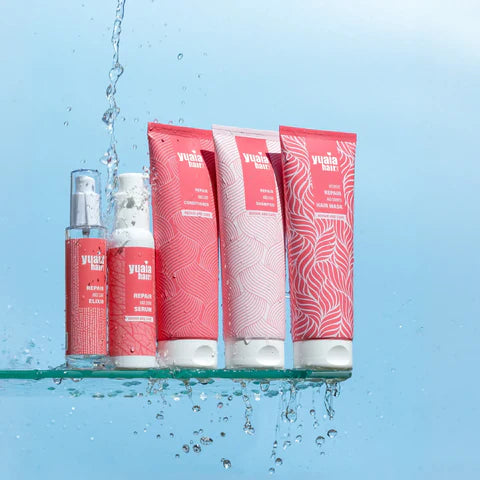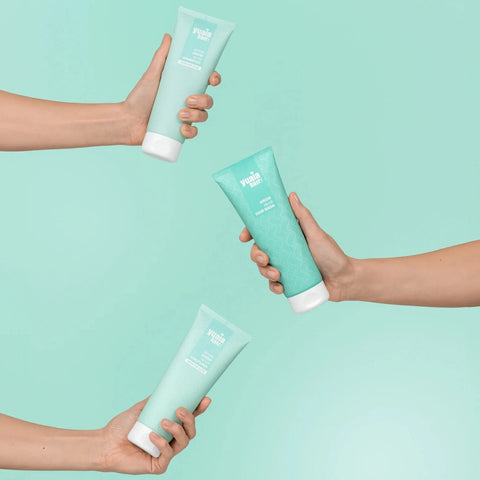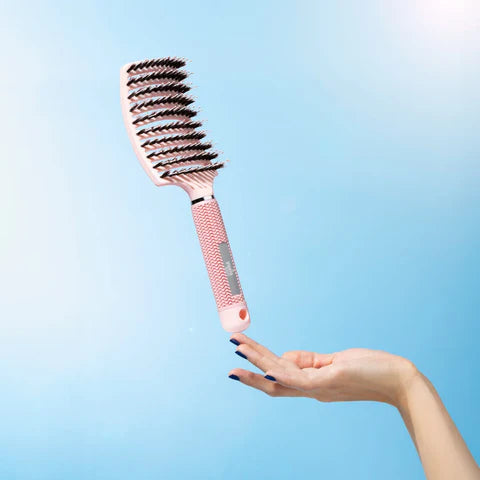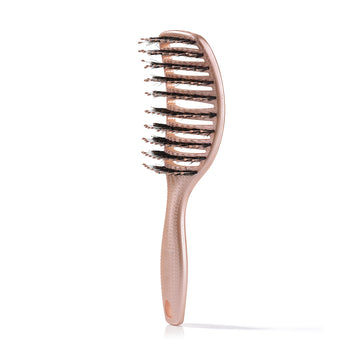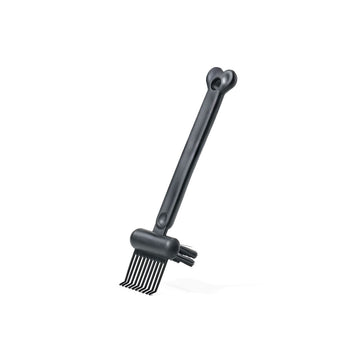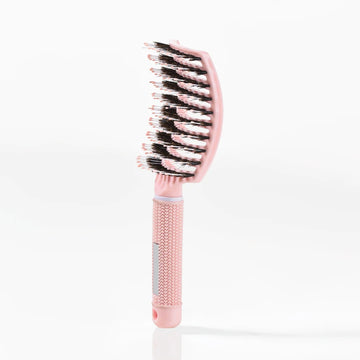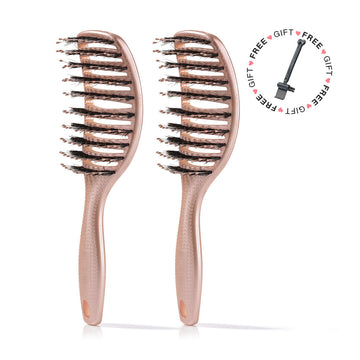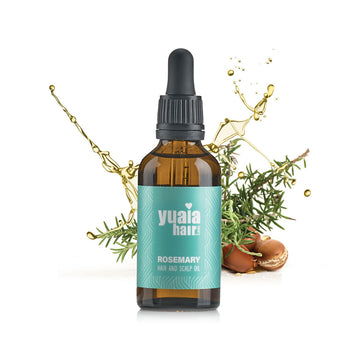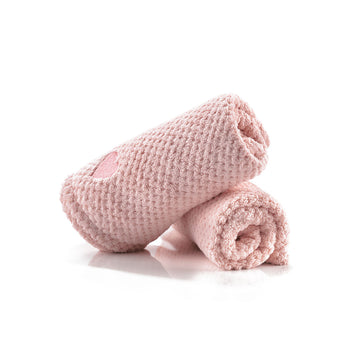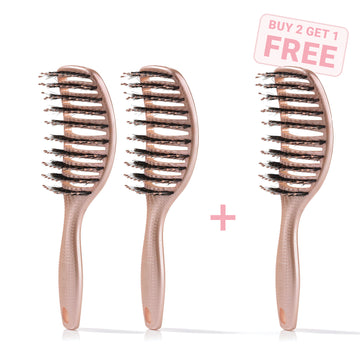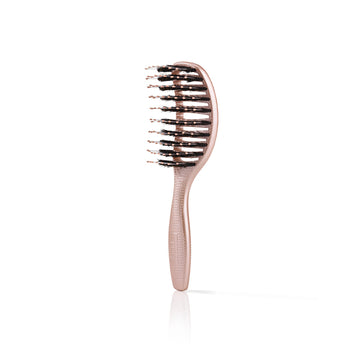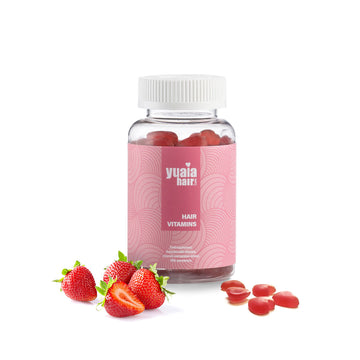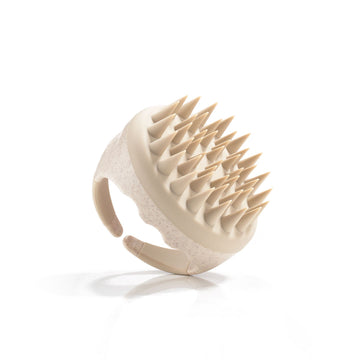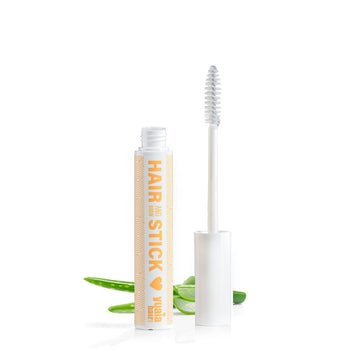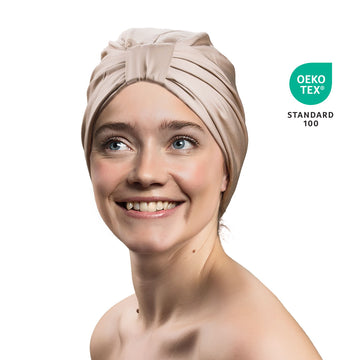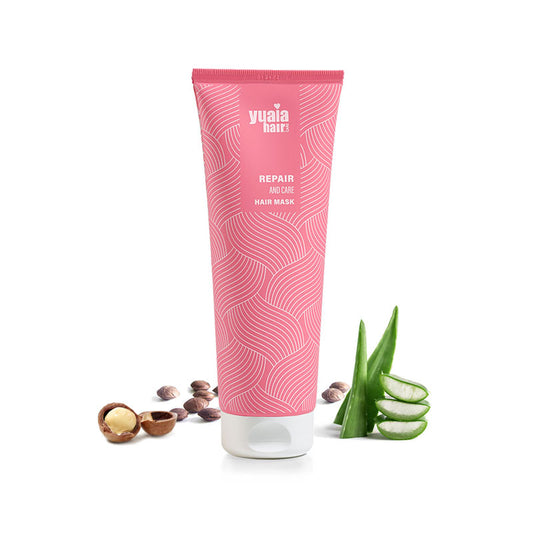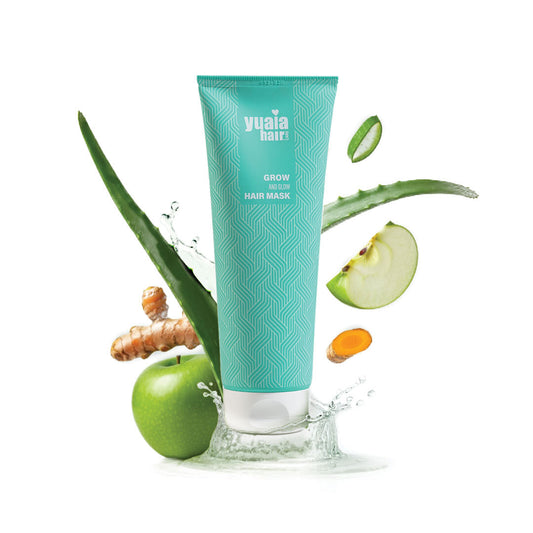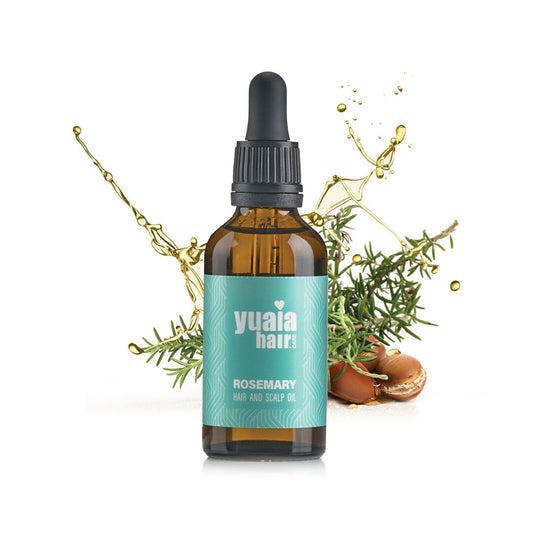
Signs that your hair needs protein
When your hair lacks sufficient protein, its internal structure begins to weaken, leading to noticeable changes in texture, strength, and manageability. Unlike moisture-related dryness, protein deficiency impacts the hair's integrity and resilience.
Common signs of protein deficiency include:
-
Overly soft or mushy texture, especially when wet, making hair difficult to control and style.
-
Limp or lifeless appearance when dry, with strands lacking bounce and structure.
-
Increased breakage, even during gentle brushing or styling, signaling weakened strands.
-
Reduced elasticity, where hair stretches but fails to spring back to its original shape.
-
Loss of curl definition, resulting in stringy or elongated curls that don’t hold their pattern.
-
In straight hair, excessive flatness or a straw-like texture can indicate the same imbalance.
-
High porosity, where hair quickly absorbs moisture but struggles to retain it, often leading to a rough surface and persistent frizz.
These signs point to a compromised protein structure within the hair shaft. Incorporating targeted protein treatments—such as masks or conditioners enriched with keratin or hydrolyzed proteins—can help rebuild strength, restore elasticity, and bring your hair back to a healthier, more resilient state.
Signs that your hair needs moisture
Dry, moisture-deprived hair often reveals itself through a combination of persistent symptoms that can be hard to ignore. One of the first and most telling signs is a rough, brittle texture that doesn’t improve with regular washing or styling.
Key indicators include:
-
Frizz, particularly in humid environments, where dry strands struggle to retain shape and smoothness.
-
Lack of shine, leaving hair looking dull and matte instead of vibrant and reflective.
-
Tangles and knots, which occur more frequently as dry strands cling together and resist detangling.
-
Stiffness and coarseness, even after using conditioners, suggesting a deeper need for hydration.
In addition to the above, a dry, itchy, or flaky scalp may also accompany dehydrated hair, reflecting a lack of nourishment at the root level. Another telling sign is how your hair responds to moisture-based products:
-
If it absorbs hydrating sprays, leave-ins, or masks quickly and shows immediate softness or smoothness, your hair is likely in need of consistent hydration.
These symptoms strongly suggest your hair would benefit from a moisture-rich care routine. Using hydrating shampoos, conditioners, and treatments can restore elasticity, manageability, and overall health, giving your hair a softer, more resilient feel.
How to test if your hair needs protein or moisture
Before choosing between protein or moisture treatments, it’s important to assess what your hair actually needs. Fortunately, there are a couple of easy, at-home tests that can give you a clearer picture of your hair’s condition. These tests help you detect signs of imbalance, making it easier to target your care routine effectively.
These simple techniques, when used together, offer a holistic view of your hair's condition and can guide you toward the right care routine.
Wet strand test
The wet strand test is a simple and effective way to assess your hair’s elasticity and determine whether it needs protein or moisture. This method offers valuable insight into your hair's current condition and helps guide your treatment approach.
How to do it:
-
Start with clean, damp hair. Select a single strand from an area where your hair is most representative (e.g., not overly processed or overly protected).
-
Gently stretch the strand between your fingers, slowly pulling it apart to observe its reaction.
Interpret the results:
-
If the hair stretches a lot and feels rubbery without returning to its original shape, it may be over-moisturized and in need of protein to rebuild internal strength.
-
If the hair snaps quickly with no stretch, it is likely lacking moisture and requires hydration to restore flexibility and softness.
By regularly performing this test, you can better understand your hair's balance between strength and elasticity, allowing for a more tailored and effective hair care routine.
Float test
The float test is a quick and informative method to assess your hair’s porosity, helping you determine how well your hair absorbs and retains moisture. Understanding your porosity level is key to choosing the right products and treatments.
How to do it:
-
Use a clean, dry strand of shed hair. Ensure the strand is free from product buildup or oils, as these can affect results.
-
Fill a glass with room-temperature water. Avoid hot or cold water, as extreme temperatures can influence how the hair behaves.
-
Drop the strand into the water and allow it to sit undisturbed for 3–5 minutes.
Interpret the results:
-
If the strand sinks quickly, it likely indicates high porosity, often due to damage. This means the hair absorbs moisture easily but struggles to retain it, and would benefit from protein-rich treatments to help strengthen and seal the cuticle.
-
If the strand floats for a long time, it suggests low porosity, meaning the hair is more resistant to moisture absorption. Lightweight, hydrating products can help improve moisture penetration.
This simple test provides insight into your hair’s structural needs, allowing for more targeted and effective care.
Treatment recommendations based on hair needs
If your hair needs protein
If your hair shows signs of weakness, breakage, or over-elasticity, it may be lacking protein. To restore strength and structure, look for treatments that include ingredients such as keratin, silk amino acids, or collagen. These proteins can penetrate the hair shaft and help rebuild its internal structure, improving resilience and reducing breakage.
Protein-rich masks and reconstructors are particularly beneficial after chemical treatments or frequent heat styling, which often deplete the hair’s natural protein content. However, moderation is key. Overusing protein can cause the hair to become stiff, brittle, and even more prone to breakage—especially if your hair doesn’t actually require added protein.
Begin with a weekly treatment and monitor how your hair responds. If it starts to feel stronger, holds styles better, and breaks less easily, you’re likely on the right track. Adjust the frequency as needed based on the results, ensuring not to overload the hair with protein unnecessarily.
If your hair needs moisture
If your hair feels dry, frizzy, or lacks shine, it may be in need of hydration. Deep conditioning treatments with humectants such as glycerin or aloe vera help draw moisture into the hair shaft and retain it, improving softness, shine, and manageability. Moisture treatments are especially important during dry or cold seasons and for hair frequently exposed to heat styling.
In addition to deep conditioners, use leave-in conditioners and lightweight oils like argan oil or jojoba oil into your daily routine. These help lock in moisture and shield hair from environmental stressors. For best results, apply moisturizing products consistently and protect your hair from sun, wind, and drying shampoos.
With time and proper care, your hair will regain suppleness, hydration, and become significantly easier to manage.
Maintaining the protein-moisture balance
Maintaining the right balance between protein and moisture is an ongoing process that evolves with your hair’s changing needs. Factors such as climate, heat styling, washing frequency, and stress can all influence what your hair requires at any given time. Rather than following a fixed routine, adjust treatments based on how your hair feels and behaves.
After chemical treatments or excessive heat exposure, protein may be needed to rebuild strength. In dry conditions or with frequent washing, your hair may instead need moisture to stay soft and elastic. Monitor signs like texture, elasticity, and styling retention to guide your choices.
Avoid extremes—too much protein causes stiffness and brittleness, while excess moisture can leave hair limp and unmanageable. Balancing treatments that combine both strengthening and hydrating ingredients can offer a more tailored solution. With regular attention and flexible care, you can preserve your hair’s resilience, softness, and overall health.
Listening to your hair's needs
Understanding what your hair needs—and when—is the foundation of an effective hair care routine. With the right balance of protein and moisture, your hair can remain strong, hydrated, and vibrant. Monitor your hair's condition regularly and be prepared to adjust your regimen. Your hair will thank you with shine, strength, and bounce.
 2-5 day delivery
2-5 day delivery
 25.000+ satisfied customers
25.000+ satisfied customers
 Satisfaction Guarantee
Satisfaction Guarantee



